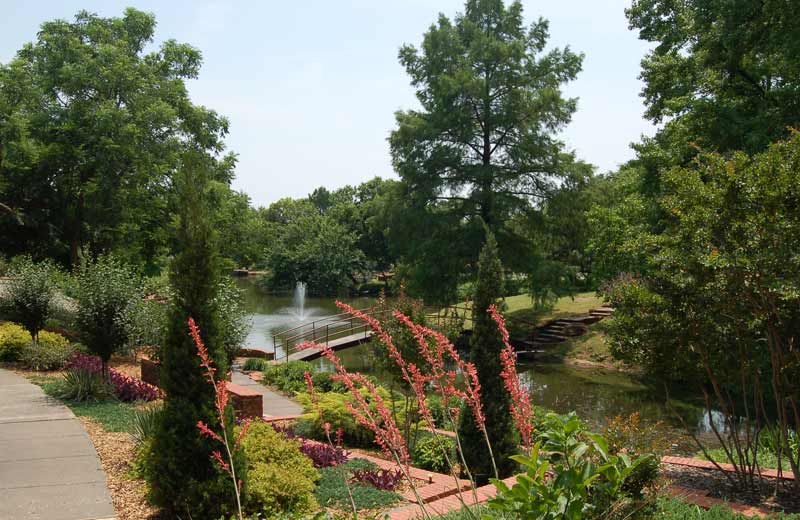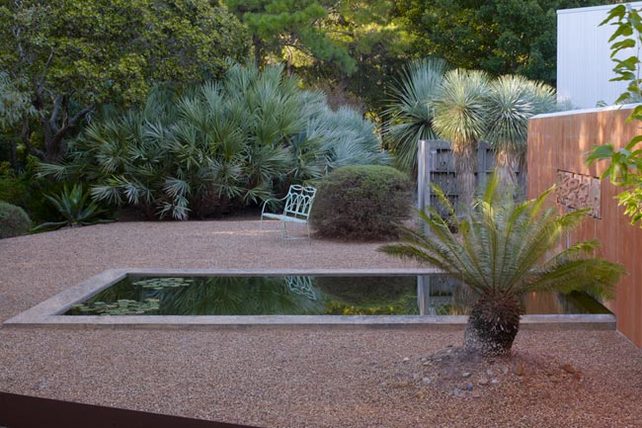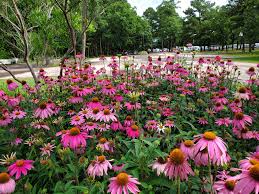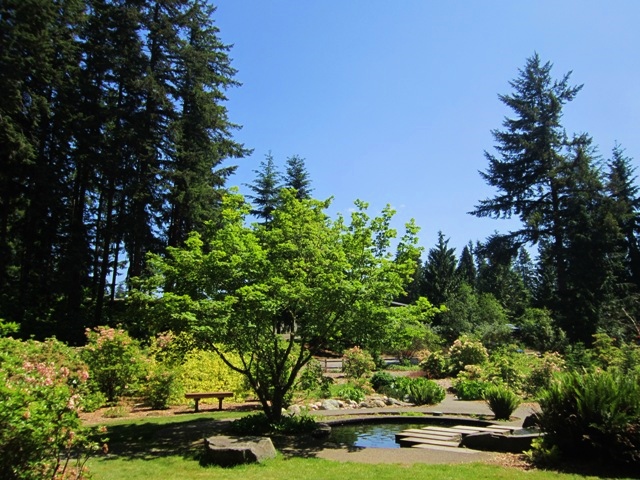New Gardens Join Reciprocal Admissions Program
The American Horticultural Society is pleased to welcome seven new gardens to its Reciprocal Admissions Program for 2021. A current membership card from the American Horticultural Society (join now) or from a garden participating in our Reciprocal Admissions Program (RAP) entitles you to special admission privileges and discounts* at 330+ gardens throughout North America! While it may still be premature to travel, it’s never to early to start planning! Read on to learn more about the new gardens that you may want to add to your travel itinerary. Search the map for all gardens participating in 2021.
 The UCLA Mildred E. Mathias Botanical Garden is a 7.5 acre public garden, outdoor classroom, and research facility on the UCLA campus in Los Angeles, California. Named for former professor and director of the garden and renowned authority on plants in the carrot family, the Botanical Garden is a living museum, featuring a diverse collection of plants from around the world. The Garden seeks to inspire environmental and cultural appreciation of plants and their relationship to society through education, research, and public outreach. The garden’s beautiful setting fosters health and tranquility for the community and visitors.
The UCLA Mildred E. Mathias Botanical Garden is a 7.5 acre public garden, outdoor classroom, and research facility on the UCLA campus in Los Angeles, California. Named for former professor and director of the garden and renowned authority on plants in the carrot family, the Botanical Garden is a living museum, featuring a diverse collection of plants from around the world. The Garden seeks to inspire environmental and cultural appreciation of plants and their relationship to society through education, research, and public outreach. The garden’s beautiful setting fosters health and tranquility for the community and visitors. Celebrating Oklahoma’s native son, actor, humorist, and social commentator, the Will Rogers Gardens have been in use since the 1930’s as a horticultural showplace and production facility of approximately 32 acres, devoted to providing public beauty and horticultural education. A collaborative plan between the Oklahoma City Parks Department and National Park Service, and implemented by Civilian Conservation Corps (CCC) and Works Progress Administration (WPA), created a naturalistic landscape of small lakes, rolling hills, curving paths, and arboretum, specialty gardens for roses, iris, daylilies, peonies, herbs, cannas, and many structures built from native red sandstone. The horticultural components contain many beautiful display gardens created and maintained for the purpose of edifying and educating the visiting public.
Celebrating Oklahoma’s native son, actor, humorist, and social commentator, the Will Rogers Gardens have been in use since the 1930’s as a horticultural showplace and production facility of approximately 32 acres, devoted to providing public beauty and horticultural education. A collaborative plan between the Oklahoma City Parks Department and National Park Service, and implemented by Civilian Conservation Corps (CCC) and Works Progress Administration (WPA), created a naturalistic landscape of small lakes, rolling hills, curving paths, and arboretum, specialty gardens for roses, iris, daylilies, peonies, herbs, cannas, and many structures built from native red sandstone. The horticultural components contain many beautiful display gardens created and maintained for the purpose of edifying and educating the visiting public. Established by former AHS Liberty Hyde Bailey Award recipient John Fairey in 1971, The John Fairey Garden (formerly Peckerwood Garden) is an extraordinary preservation garden on 39 acres near Hempstead, Texas. The garden is widely acclaimed for the originality of its design, its education and conservation programs, and its exceptional collection of over 3,000 plants, including many endangered and rare plants from Mexico, North America, and Asia. Over the decades, the Garden has focused on collecting plants from certain geographic regions and from certain plant groups. Its Mexico and Texas collections are extensive, as are its collections of oak and mahonia. Far beyond just organizational concepts, these collections are representative of plants that have survived the trials of Texas climate and made sense in the themes of John Fairey’s landscape designs.
Established by former AHS Liberty Hyde Bailey Award recipient John Fairey in 1971, The John Fairey Garden (formerly Peckerwood Garden) is an extraordinary preservation garden on 39 acres near Hempstead, Texas. The garden is widely acclaimed for the originality of its design, its education and conservation programs, and its exceptional collection of over 3,000 plants, including many endangered and rare plants from Mexico, North America, and Asia. Over the decades, the Garden has focused on collecting plants from certain geographic regions and from certain plant groups. Its Mexico and Texas collections are extensive, as are its collections of oak and mahonia. Far beyond just organizational concepts, these collections are representative of plants that have survived the trials of Texas climate and made sense in the themes of John Fairey’s landscape designs. Once the estate of RJ and Katharine Reynolds, Reynolda Gardens of Wake Forest University is a 134-acre center for community recreation and exploration in Winston Salem, in the North Carolina Piedmont region. Visitors are invited to explore Reynolda Gardens during daylight hours year-round. The formal gardens have been restored to the appearance of the early twentieth century plans, combining historic plants with new introductions; and historic design with the best modern horticultural practices. The Conservatory display of exotic plants and working greenhouses full of plants for the gardens and for sale educate and inspire children and adults. Woodland trails beckon birders and runners; a wetland and a meadow of Piedmont native plants provide habitat for wildlife and endless possibilities for enjoying and learning about nature.
Once the estate of RJ and Katharine Reynolds, Reynolda Gardens of Wake Forest University is a 134-acre center for community recreation and exploration in Winston Salem, in the North Carolina Piedmont region. Visitors are invited to explore Reynolda Gardens during daylight hours year-round. The formal gardens have been restored to the appearance of the early twentieth century plans, combining historic plants with new introductions; and historic design with the best modern horticultural practices. The Conservatory display of exotic plants and working greenhouses full of plants for the gardens and for sale educate and inspire children and adults. Woodland trails beckon birders and runners; a wetland and a meadow of Piedmont native plants provide habitat for wildlife and endless possibilities for enjoying and learning about nature. Wood County Arboretum & Botanical Gardens in Quitman, Texas covers 23 acres. Visitors can enjoy numerous flower and rose gardens including a sensory garden, a waterwise garden, a butterfly garden, and a succulent garden. The property includes a gazebo, a pergola and shade garden, a flagpole and honorarium for fallen soldiers, with benches and statuary throughout. and the historic Stinson House, built in 1869. The gardens are open year round and are free to the public.
Wood County Arboretum & Botanical Gardens in Quitman, Texas covers 23 acres. Visitors can enjoy numerous flower and rose gardens including a sensory garden, a waterwise garden, a butterfly garden, and a succulent garden. The property includes a gazebo, a pergola and shade garden, a flagpole and honorarium for fallen soldiers, with benches and statuary throughout. and the historic Stinson House, built in 1869. The gardens are open year round and are free to the public.
 Located in Maple Valley, Washington (about 30 miles from Seattle), the Lake Wilderness Arboretum is a public garden with 42 acres of forest trails and display gardens. The Arboretum is is a community retreat and an outdoor classroom for nature lovers of all ages. Foot trails meander through the 42 acres of natural forests; grounds also include rock, woodland, and ethnobotanical gardens and a children’s discovery forest. The Arboretum is home to two of the largest collections of western deciduous azaleas and hardy fuchsias in the world.
Located in Maple Valley, Washington (about 30 miles from Seattle), the Lake Wilderness Arboretum is a public garden with 42 acres of forest trails and display gardens. The Arboretum is is a community retreat and an outdoor classroom for nature lovers of all ages. Foot trails meander through the 42 acres of natural forests; grounds also include rock, woodland, and ethnobotanical gardens and a children’s discovery forest. The Arboretum is home to two of the largest collections of western deciduous azaleas and hardy fuchsias in the world.
 The gardens of the Landcraft Garden Foundation in Mattituck, New York (near the tip of Long Island) surround a restored 1840s farmhouse. Garden rooms, hedged in by hornbeam and boxwood, feature various themed gardens within. Additionally, there is a vegetable/herb garden, a formal knot garden, several bog plantings, meadow gardens, and a woodland shade areas. Many of the plantings throughout contain tropicals, subtropicals, tender perennials, and annuals. There are a handful of hardy palms and a large grove of Musa basjoo, the hardy banana. The house and gardens are encircled by ten acres of rehabilitated meadows with mowed paths for viewing native plants and wildlife. The meadows contain grasses, perennials, and shrubs that provide a habitat to deer, fox, groundhogs, rabbits, box turtles, wild turkeys, and many other birds and insects.
The gardens of the Landcraft Garden Foundation in Mattituck, New York (near the tip of Long Island) surround a restored 1840s farmhouse. Garden rooms, hedged in by hornbeam and boxwood, feature various themed gardens within. Additionally, there is a vegetable/herb garden, a formal knot garden, several bog plantings, meadow gardens, and a woodland shade areas. Many of the plantings throughout contain tropicals, subtropicals, tender perennials, and annuals. There are a handful of hardy palms and a large grove of Musa basjoo, the hardy banana. The house and gardens are encircled by ten acres of rehabilitated meadows with mowed paths for viewing native plants and wildlife. The meadows contain grasses, perennials, and shrubs that provide a habitat to deer, fox, groundhogs, rabbits, box turtles, wild turkeys, and many other birds and insects.